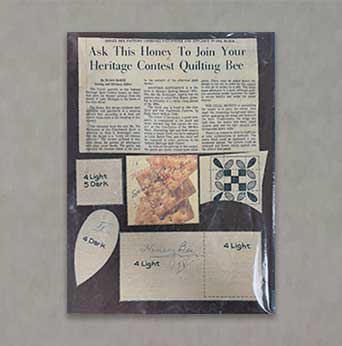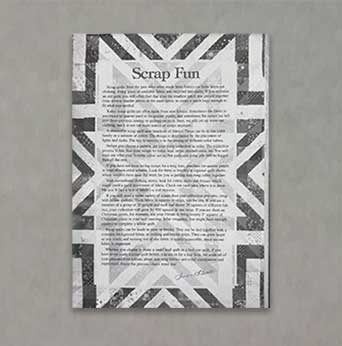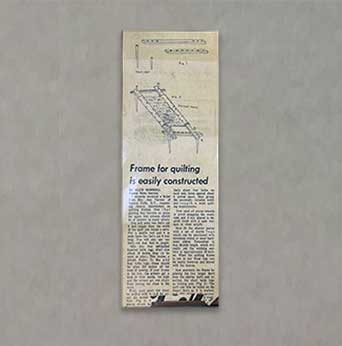Quilters Exhibit
Quilters Then and Now – Piecing Women’s Stories
April 7 – 29 Reception: April 21, 6 – 8 pm
Sponsored by: FC Tucker, Central Indiana Hydroseeding, Smiley Body Shop, Triple J Plumbing, and Ed and Susan Yanos.
Quilters Then and Now: Piecing Women’s Stories
“Blessed are the quilters, for they shall be called piecemakers.” So reads a popular t-shirt among quilters. Quilting has been used as an apt metaphor for life. While some folks demand a whole piece of a new cloth in order to make something, quilters take the scraps given and turn them into something very beautiful. One of the characters in Quilters, a play by Molly Newman and Barbara Damashek, says that much of a woman’s work is the kind that perishes with the using. Part of the beauty of quilts is their fragility, especially older quilts that have wrapped generations in their warm, frayed and faded as they are.
Historically, for colonial and pioneer women, these scraps were left-over fabrics from sewing the family’s close, or recycled bits of worn-out clothing, such as a daughter’s school dress or even the quilter’s wedding dress. Today’s culture often do the same, making quilts from their husband’s ties, t-shirt, or from family photographs, thanks to home computers and printers.
Quilts were often made to mark special occasions, such as births, weddings, or a new home. Girls made quilts to fill their hope chest. Sometimes a quilt was fashioned to wrap a deceased family member for burial. Today’s women add to that list other occasions, such as for a grandchild’s college dorm room, for a friend battling cancer, or to remember a special vacation, raise funds for charity, or bring awareness to a social cause.
From simple geometric shapes, women have designs blocks to reveal their experiences, express their beliefs, or celebrate the beauties of nature: the Dugout, Log Cabin, Butterfly, Four Doves in a Window, Rocky Road to Kansas (or anywhere, for that matter), Double Wedding Ring, Robbing Peter to Pay Paul, Baby’s Blocks, Tree of Life. Women chose traditional designs they learned from previous generations of quilters or created new ones to be passed on to their daughters. Some created “story quilts” recounting Biblical narratives or historical events they witnessed, such as a meteor showers, or family tales. Therefore, quilts often provide women with one of the few creative outlets open to them, providing them with a way to work through emotions or give substance to their longings. Just as the various, jumble scraps were brought together into an ordered design, making a quilt could provide order to a traumatic time in a woman’s life. And they often provided women with community through quilting bees.
So, each quilt tells a story—through the fabrics chosen, through the occasion and recipient it was made for, through the design and stitching use, through the quilters vision for it and experience making it, as well as through its history after it left the quilter’s hands.
Although today’s quilters have access to a wider variety of fabrics and embellishments, patterns, computer design software, techniques and time-saving machines such as the long arm quilting machine, their quilts also tell the stories of the women (and men!) who created them. And since 1971 when, for the first time, quilts were exhibited in an art museum (the Whitney Museum of American Art in New York), quilting has surged in popularity and prestige. What is known as the art quilt is being taken more and more seriously as the artistic medium in its own right.
We hope you enjoy this exhibit of beauty quilts from the past and present, and the stories behind them.
Quilts – 2022 Exhibit
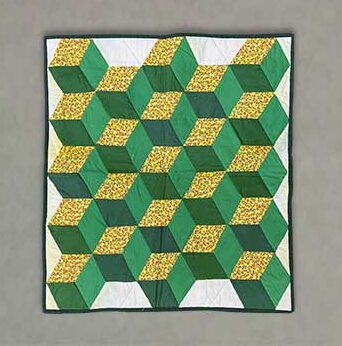
Baby Blocks
Conner Quilters
◈
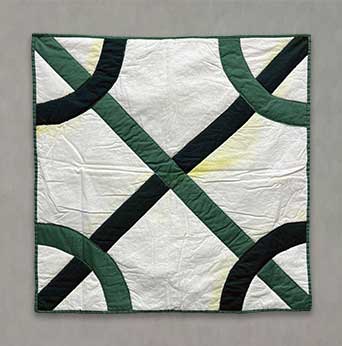
Country Crossroads
Conner Quilters
◈
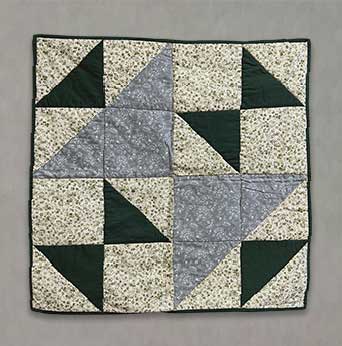
Crosses and Losses
Conner Quilters
◈
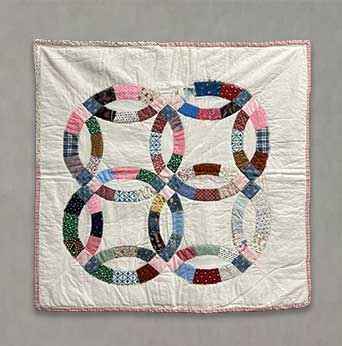
Double Wedding Ring
Conner Quilters
◈
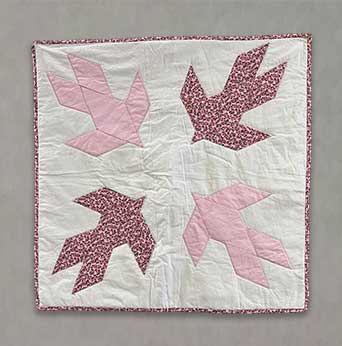
Four Doves in a Window
Conner Quilters
◈
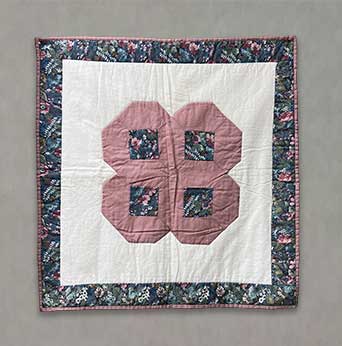
Kansas Dugout
Conner Quilters
◈
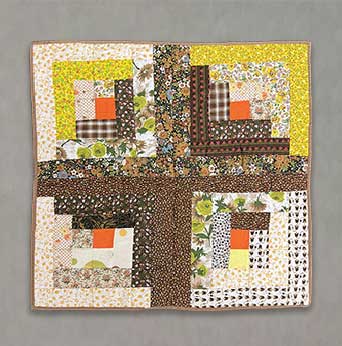
Log Cabin
Conner Quilters
◈
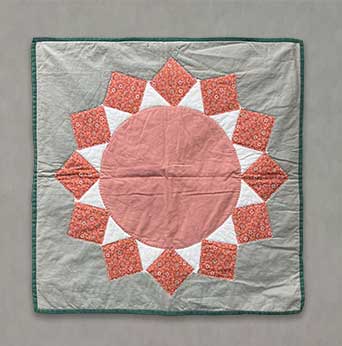
Rebel Patch
Conner Quilters
◈
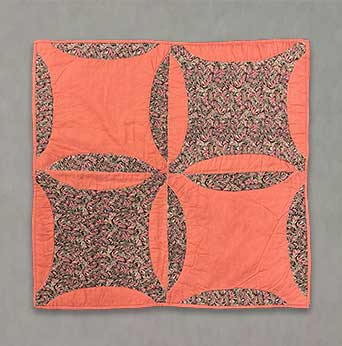
Robbing Peter To Pay Paul
Conner Quilters
◈
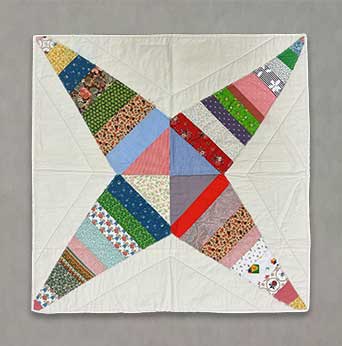
Rocky Road Top Kansas
Conner Quilters
◈
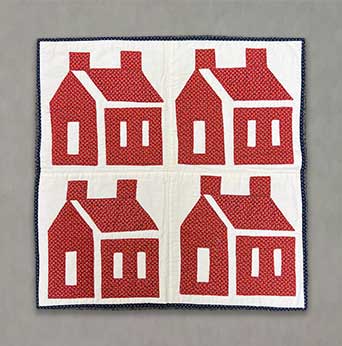
School House
Conner Quilters
◈
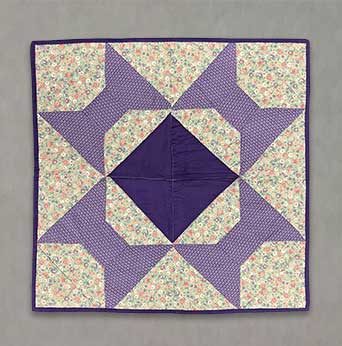
Secret Drawer
Conner Quilters
◈
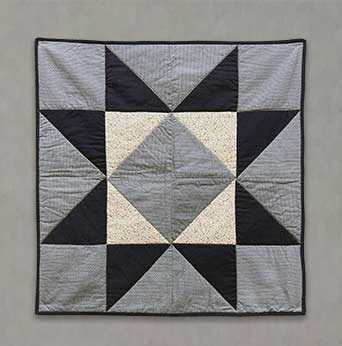
Star Block
Conner Quilter
◈
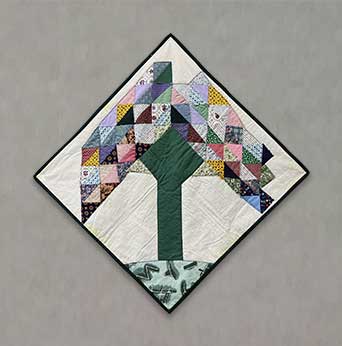
Tree of Life
Conner Quilters
◈
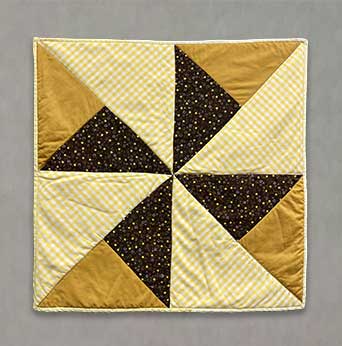
Windmill
Conner Quilter
◈
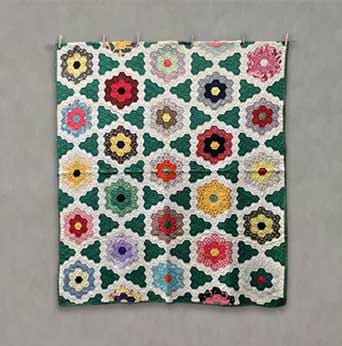
Flower Garden
Maude Morgan (1950s)
◈
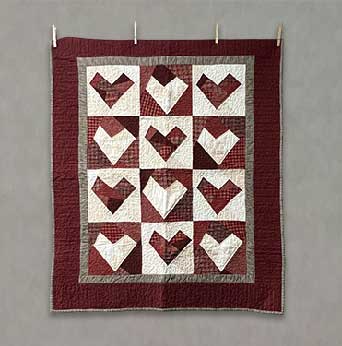
Heart Quilt
Nancy Burkhardt
◈
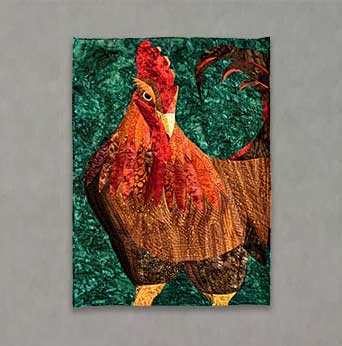
Achilles
Susan Yanos (2020)
◈
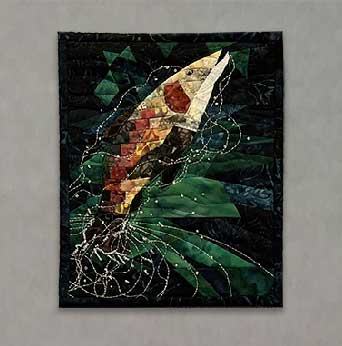
Dance of Light And Water
Susan Yanos (2021)
◈
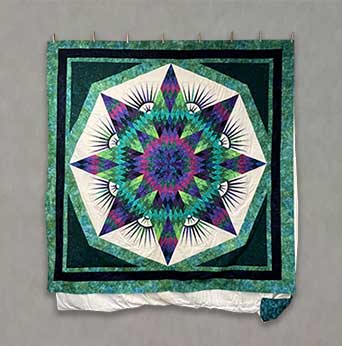
Lone Star
Susan Yanos
◈
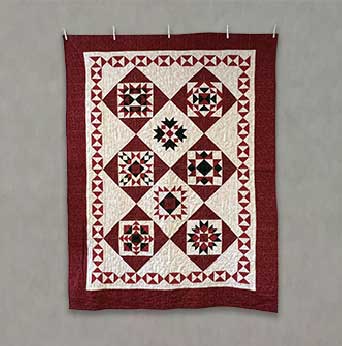
Sampler Quilt
Susan Yanos
◈
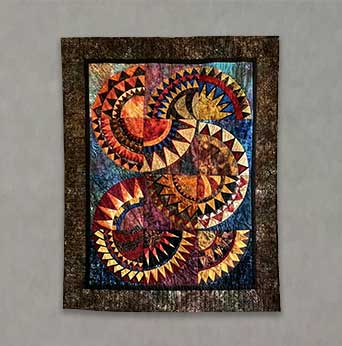
Solar Symphony
Susan Yanos (2018)
◈
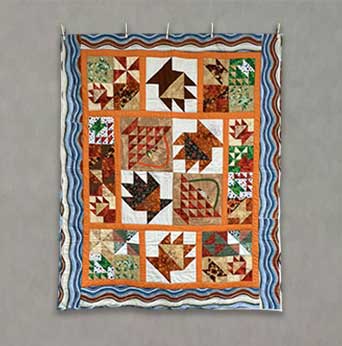
COVID-19
Sylvia Ward (2020)
◈
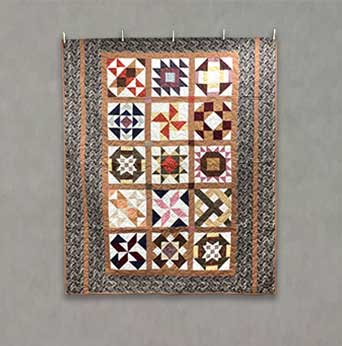
Pioneer Quilt
Sylvia Ward
◈
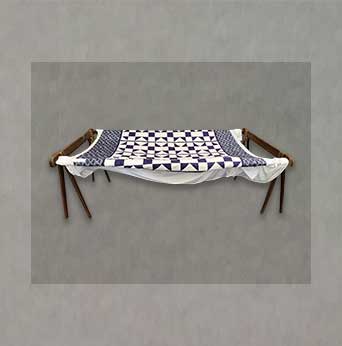
Shoe Fly
Sylvia Ward
◈
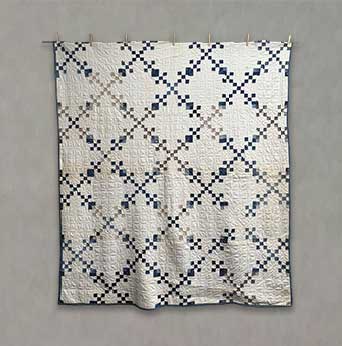
◈
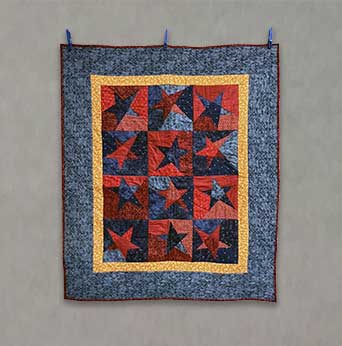
◈
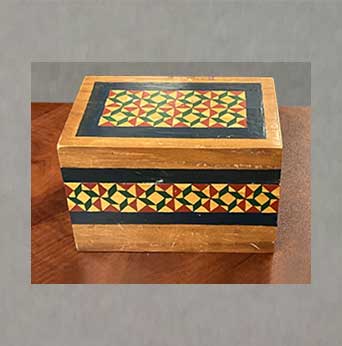
◈
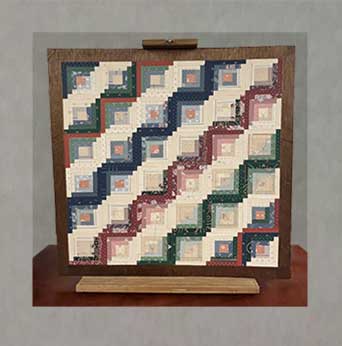
◈
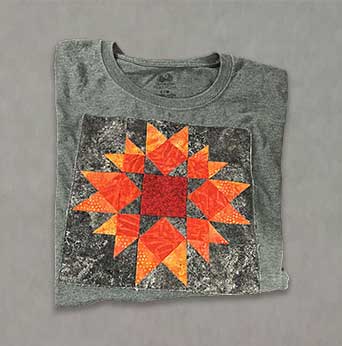
◈
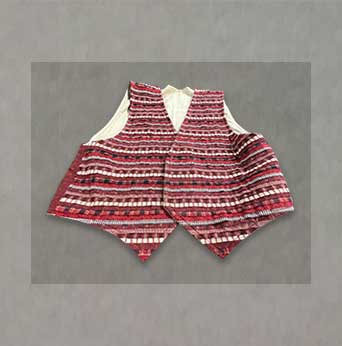
◈
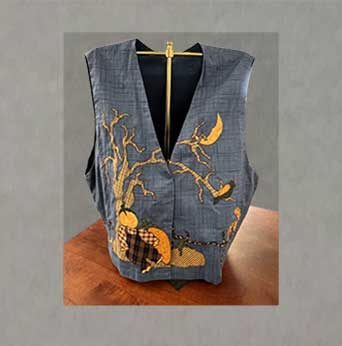
◈
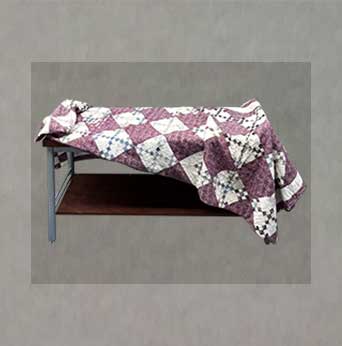
◈

◈
Quilts and Stories
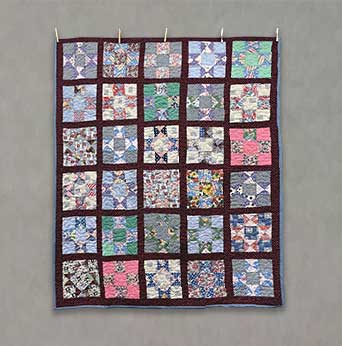
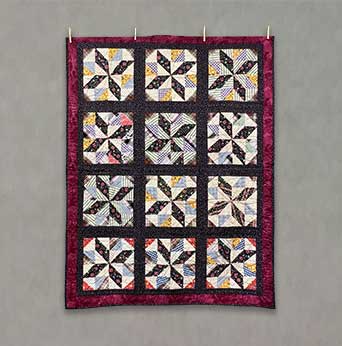
A Family Effort
Ethel Sands pieced her first quilt top at the age of 97. She is now working on her 15th quilt at the age of 99. The quilting in completed by a long armor named Teresa Case, and a friend binds them for her.
Displayed here are two of her quilts: one showing the ever-popular star-block, the other the windmill. One of these quilts was made from blocks her mother had pieced and Ethel had kept in her bureau, hoping to complete someday.
Ethel’s daughter, Dorine, helps her pick out the backing and do some of the cutting. Most of the pieced fabric has been stored by Ethel for years; some are from her sewing experiences of making dresses, jackets, and skirts in the past.
Sewn into her quilts are many stories of her own childhood up to the present day.
Top Quilt: Star Block by Ethel Sands
Bottom Quilt: Windmill by Ethel Sands
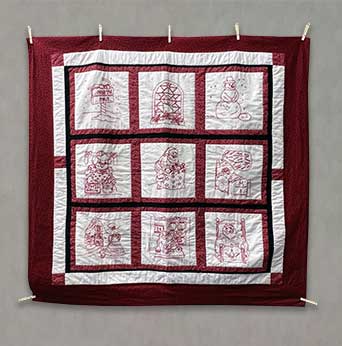
Christmas Red Work – Sylvia Ward (2005)
Blocks were traced from a coloring book. Sewn in red thread and framed in black.
Quilting on machine.
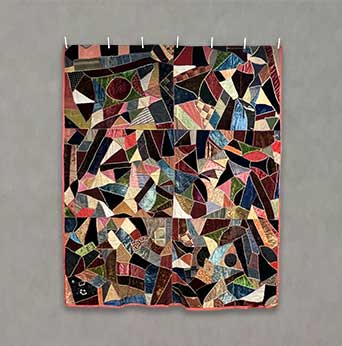
Crazy Quilt- Marilyn J Witt
This velvet crazy quilt was handmade by my maternal grandmother, Nellie Mae Sowers Gordon. It was made around 1929 or 1930 so it is nearly 100 years old. Although crazy style quilts may appear haphazard, they are carefully planned. Hours were spent cutting shapes and trying various arrangements of the pieces before sewing.
The quilt is made from mostly rich jewel colored velvet and silk fabrics and pieced, tied, and feather stitched around each individual fabric piece. I think the lovely intricate feathering stitching is so artistically (and neatly) done. She often used thread that was a complementary color of fabric piece around Wichita stitched. Many of the fabrics my grandmother used were pieces of fabrics left over from dresses made by my grandmother, great aunts, or other family members. She bought a few pieces from Sears and Roebuck to complete the quilt.
When my mother received the quilt from her mother, I fell in love with it. The colors were much brighter and richer then and it was so beautiful and so soft. She used it for her bedspread and neatly folded it and laid it aside every night before going to bed. She sometimes let me use it for my bedspread. Of course, I had to do the same. I often looked at the piece and imagines what the dresses looked like that were made from the fabrics and who wore them. I designed, colored, and cut out paper dresses that I imagined and use them to dress my Victorian paper dolls. Now in this quote belongs to me.
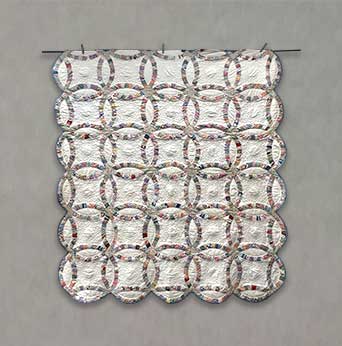
Double Wedding Ring – Connor Quilters
This vintage quilt was often made by a bride-to-be, or by friends or family as a gift to the bride and groom.
This quilt top was donated to the Connor Quilters and quilted by them in 2021 – 2020.
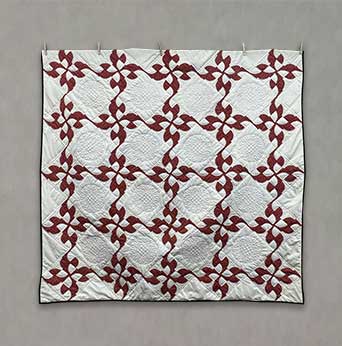
Drunkard’s Path – Connor Quilters
Drunkard’s path became a popular pattern during the Women’s Temperance Movement of the 1920s, which discouraged alcohol consumption.
This quilt top was donated to the Connor Quilters and quilted by its members.
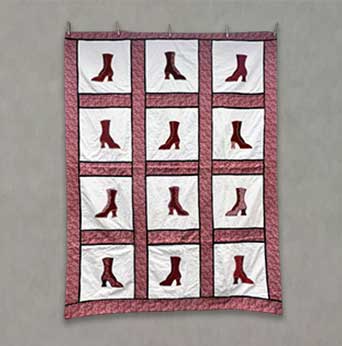
Fancy Shoes – Sylvia Ward
Pattern from a quilting magazine in 2009. All machine done. Fun to make.
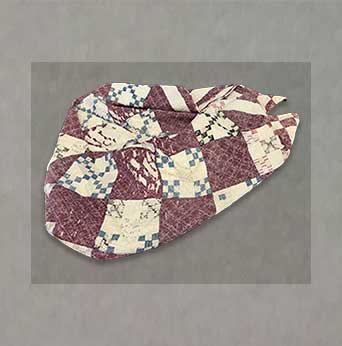
Fred Yockey’s Family Quilt
This quilt is from the Fred Yockey family. It is about 120-130 years old. Some of the dyes in the prints have rotted from the acid in the coloring. It is quilted one inch apart to hold the cotton batting from separating.
Sometimes they just use newspaper.
The closer you quilt, the stronger your quilt will be.
Sylvia ward
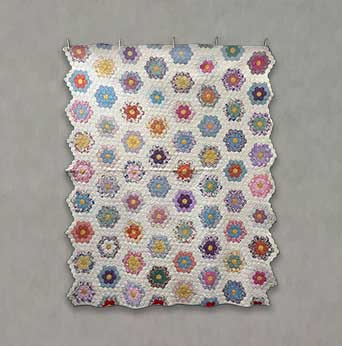
Grandmother’s Flower Garden – Connie Lane
I bought this quilt at an antique shop in Lewisville, IN. The maker is unknown.

Irish Chain – Floyd and Susie Bell
This Irish Chain patterned quilt was hand pieced and quilted by Floyd and Susie Bell, previously of rural Henry County. The Bells were like grandparents to me. This quilt was made by them in the 1950s or 1960s. They spent their evenings cutting out fabric pieces with cardboard templates and then sewing them together. I remember it well. Maybe this is why I began quilting after retirement, only I quilt by machine. I was fortunate to be gifted this quilt, and I treasure it.
Doris Williams
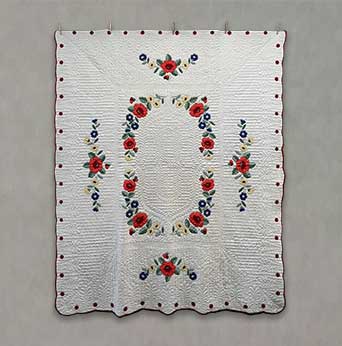
Poppies
This beautiful quilt was made by the Sisters of Saint Francis of Oldenburg, IN. It belonged to my great-aunt Caroline Brittan of Indianapolis, who was a friend of the nuns. My mother cared for Aunt Caroline in our home until she died. She inherited this quilt and gave it to me when I became a quilter.
Connie lane
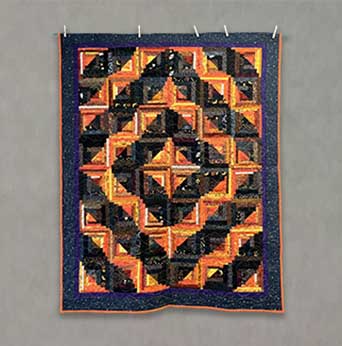
Quilting during troubled times – Susan Yanos
Making this log cabin quilt kept me saying during a very difficult time of my life. While my sister was dying of cancer in the fall of 2018, my mother also became seriously ill, requiring months in the hospital and three major surgeries. I would often wake about 3:00 in the morning, wrapped with worry, unable to sleep or read, too numb to pray. But I discovered I could “cut stacks” or “chain piece” blocks on my sewing machine, which are both repetitive tasks requiring just enough attention to keep my mind focused. In fact, piecing became almost meditative. By the time my husband awoke two or three hours later, I was centered and calm, ready for whatever the day would bring – consulting doctors, visiting hospital rooms, or helping my nieces plan their mother’s funeral.
It was quilted on a long arm machine by sandy Fairchild.
Log cabin designs depend on the interplay of light and dark fabrics to complete an overall pattern, much like the light and shadow of life. Log cabin designs also symbolize home and family traditionally. The central block is red to represent the hearth/heart of the home. In this quilt, even that central block is divided into light and dark triangle sewn together to make a square. No wonder I gravitated to this pattern that year!
Because it is a fall themed quilt, I pull it out of the closet in early September – around the anniversary of my sister’s death dash – and then able to remember the bright, grace filled moments that occurred during those very dark months.
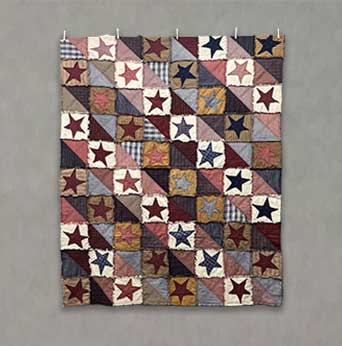
Quilts From The Past – Star Quilt – Nancy Burkhart
When I started my business, “Nancy’s Fancy Sewing Corner,” twenty years ago, I did not know how to quilt. Being surrounded by women who did, I learned to make these quilts. At that time, the Kwik Quilt method was popular, and that is what the Heart and Star quilts are. Another popular quilting technique in 2002 was the rag quilt. I love the primitive and homespun fabric that was in then. Now, 20 years later, the rag quilting method and homespun fabric are becoming popular again.
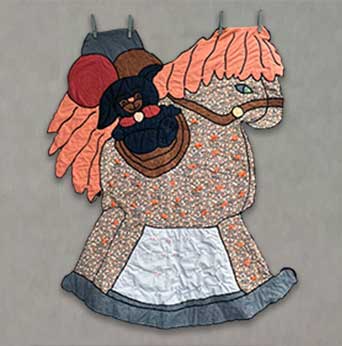
Rocking Horse – Mary Lou Hayes
The “Critter Quilts” were developed by a country woman in the 1980s. Various farm animals were created. I chose the “Rocking Horse” pattern to make for my children because of their father, Larry Hayes. Larry made wooden rocking horses for his four children: Autumn, Ian, Crystal, and Jesse. The material and thread I used were received from grandmothers Madelyn Eichelberger, Letha Prosser, and Vivian Hayes.
Technique is applique of fabric onto a 3 foot by 4 foot backing. Zig zag tight stitch is used to adhere the fabric pieces and form the outline of what the rocking horse looks like. It is perfect for an infant/small child in that it is not puffy.
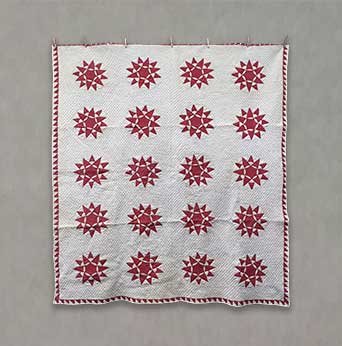
Setting Sun
This is a very old quilt. I purchased it at an estate auction. Notice the tiny stitches. How did the maker do it? I can’t imagine! I did some research and was able to identify the pattern as Setting Sun. It was previously owned by Mr. and Mrs. Lurton Gesell of Fayette County – the Bentonville area.
Connie Lane
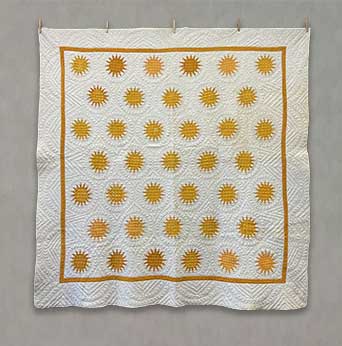
Sunburst
This quilt was made in the early 1900s by Nellie Lane and Dora Heathco of Lewisville, Henry County, IN. Dora had poor eyesight and eventually was completely blind. Notice the dense stitches and how small they are.
My husband, Dan, inherited this quilt from his great-grandmother Nellie Lane and his great-aunt, Dora Heathco.
Connie lane
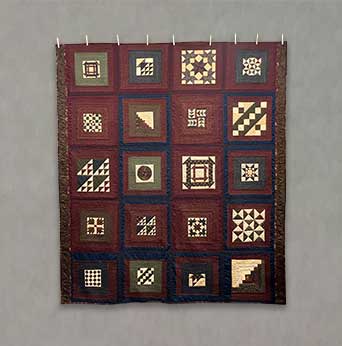
The Underground Railroad – Doris Williams
This quilt was made with the “Quilt As You Go” (QAYG) method by Doris Williams. The 20-inch blocks were quilted over the winter of 2017 and then joined by my own method of sashing. This method allows the quilter to complete large projects with her home sewing machine. The blocks are from the Underground Railroad quilt pattern.
Quilting is my retirement hobby.
The Underground Railroad
Although scholars debate whether or not quilters were indeed used to convey messages to runaway slaves – since the stories come to us through the oral tradition – many believe the evidence is strong. Colts hung on the line to air could signal that home was a safe haven for runaways, or they could indicate the path to follow. Some common blocks in their possible meanings are listed below. However, be careful! Some blocks are tributed to the Underground Railroad did not appear until many years after this. Such as the Drunkard’s Path.)
Several samples could indicate that it was time to prepare to escape because the conductor was then the area: wagon wheel, tumbling blocks, box, or monkey wrench, the last meeting to be sure to pack tools or weapons. Others provided directional clues: Flying Geese, Broken Dishes, North Star, Crossroads. Other common blocks and their possible meanings are:
- Bear’s Paw: follow an animal trail through the mountains to find water and food.
- Bow Tie or Britches: change out a slave clothing to appear someone of high status or as a free person.
- Log Cabin: seek shelter now; the people here are safe to talk to.
- Rose Wreath: someone died here on the journey; It was an African tradition le leave floral wreaths on graves.
Several of these blocks appear in Doris Williams’ quilt. She also the marked pages in the book hidden in Plainview on display during this exhibit for photos and drawings.
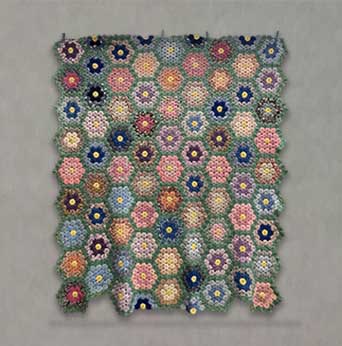
Yo-Yo
Gathering circles of fabric into yo-yos dates back to pre-Victorian times. Its popularity peaked during the depression because it required only small bits of fabric. This quilt or coverlet was made by Mrs. Johnson of Connersville IN.
Connie Lane
Books, Information, and Patterns
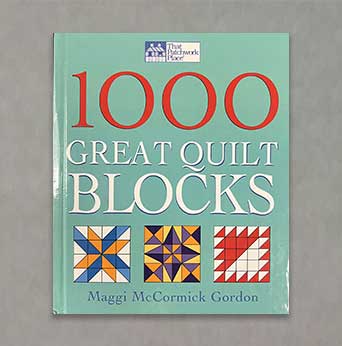
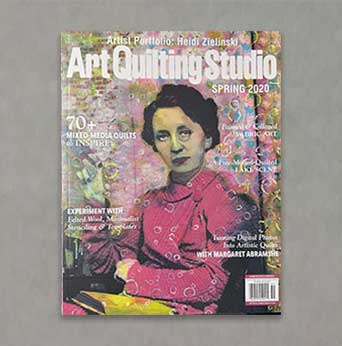
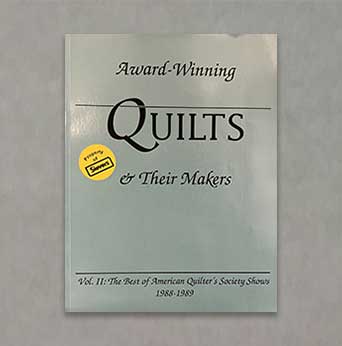
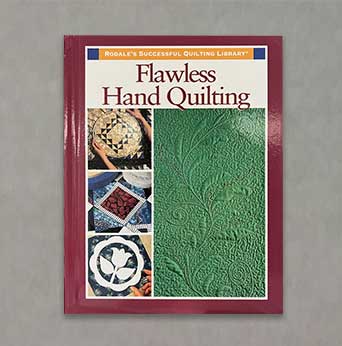
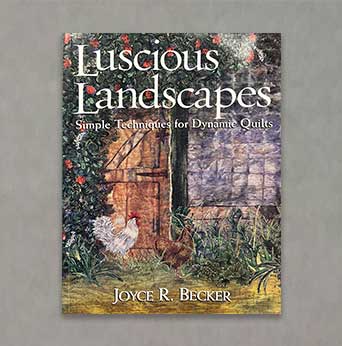
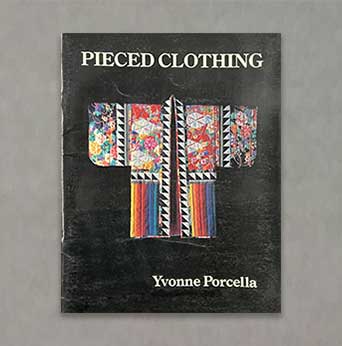
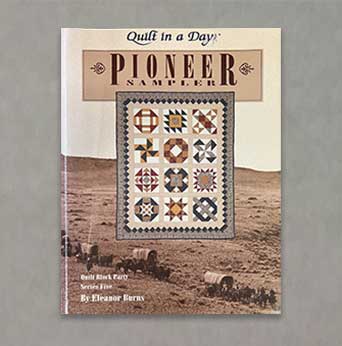
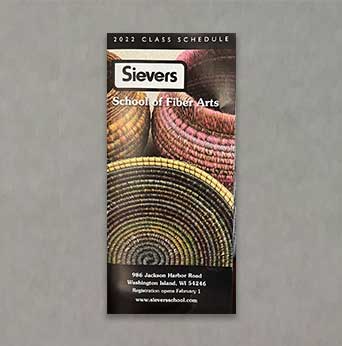
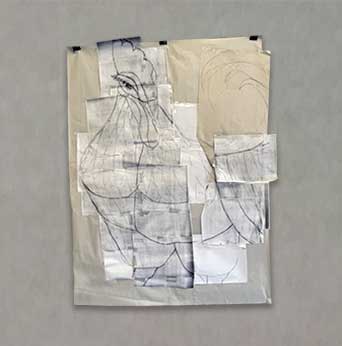
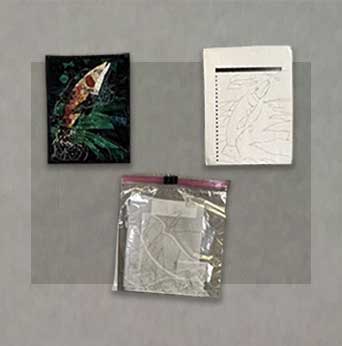
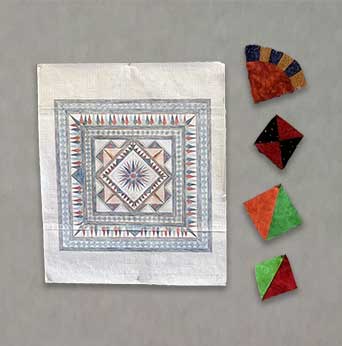
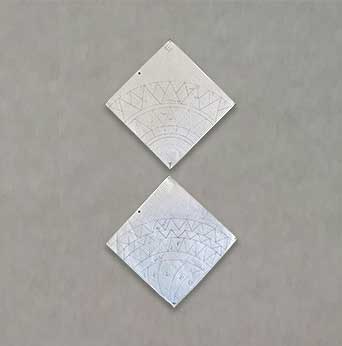
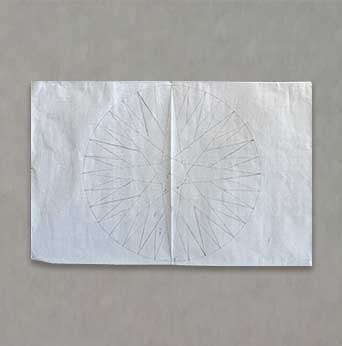
Piecing vs. Quilting
Although the term quilting is used rather indiscriminately in the making of quilts, it technically refers to only one part of a two-part process. Both processes may be done by hand or machine.
The first part is known as piecing, when the quilts top layer is created by sewing together small pieces of different fabrics into an overall design. Then the quilter creates a “quilt sandwich” of this top pieced layer, a middle layer of batting (often cotton, but can be wool silk or polyester) which acts like insulation because of the air trapped in the fibers, and a bottom fabric layer known as the backing.
The second part of the process, known as quilting, is when the quilter stitches these three layers together. Sometimes the quilting is hidden within the seams or outlines the design so as not to distract from it. Sometimes it serves as a background to highlight the design. Sometimes it becomes an integral part of the design. Sometimes it may be the main design element itself, especially on non-pieced quilts. More simple quilts have no quilting; the three layers are tied together at intervals with bread or yarn.
For the quilting to progress well, the sandwich of top, batting, and back must be carefully holding place so that the layers remain flat and smooth. Quilters accomplish this by either pinning or basting layers together at 3-5- inch intervals, or by inserting the sandwich into a quilting frame. Quilting frames come in all sizes, from those that can be held in the lap to large ones that stand on the floor and can accommodate several quilters working on the same quilt. In pioneer cabins or space was limited, some enterprising quilters suspended the frame from ropes on pulleys so that the frame could be pulled up to the ceiling when not in use. Today sewing machines and computerized long arm quilting machines can finish in hours what took women days and weeks to complete my hand.
Most cultures have a preference, enjoying piecing over quilting or vice versa. See if you can tell from a particular culture which it is.

